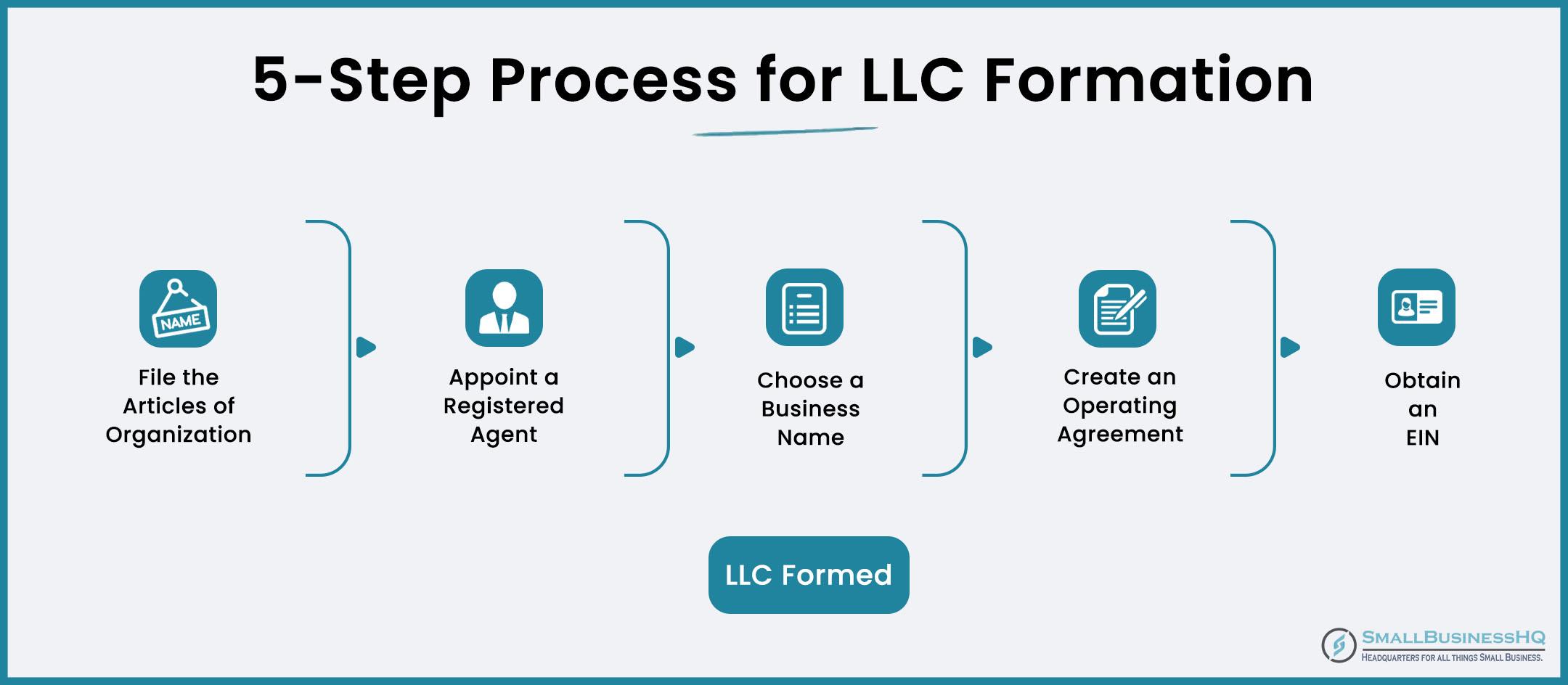
In today’s tech-driven world, open source software is more than just a buzzword; it’s a thriving ecosystem brimming with innovation and collaboration. But did you know that you can turn your passion for open source into a profitable venture? That’s right! Whether you’re a seasoned developer, a budding entrepreneur, or simply someone who loves to tinker with code, there are plenty of ways to monetize your open source projects. In this article, we’ll explore nine simple yet effective strategies to help you leverage your skills and creativity for financial gain. So, if you’ve ever wondered how to transform your open source contributions into a steady income stream, stick around. Let’s dive in and discover how you can make money while doing what you love!
Understanding Open Source Software and Its Potential
Open source software (OSS) is not just a coding revolution; it’s a movement that empowers developers and users alike. By making source code freely available, OSS encourages collaboration and innovation, enabling anyone to contribute to projects. This openness fosters a community-driven approach where diverse minds come together to solve problems and enhance software functionalities.
One of the most compelling aspects of open source software is its potential to drive economic opportunities. Developers and entrepreneurs can leverage the power of OSS in various ways, turning a passion for coding into a sustainable income source. With the right strategies, the barriers to entry into the tech market diminish, allowing anyone with a good idea and dedication to carve out a niche.
Communities surrounding open source projects are vibrant and multifaceted. Participants often share resources, knowledge, and expertise, creating a rich ecosystem for learning and growth. This collaborative spirit not only leads to robust software but also opens doors for networking and partnerships. Engaging actively in these communities can lead to significant career advancements and potential financial rewards.
When it comes to monetizing open source projects, understanding your audience is crucial. Whether it’s developers looking for tools or businesses needing customized solutions, identifying the needs of your target market can help you tailor your offerings. Here are some strategies to consider:
- Freemium Models: Offer a basic version of your software for free while charging for premium features.
- Consulting Services: Provide advice and customization services for organizations using your software.
- Donations: Use platforms like Patreon or Open Collective where users can support your work directly.
- Training and Workshops: Share your expertise through paid training sessions or workshops.
Furthermore, businesses can significantly benefit from adopting open source solutions. Many organizations are moving towards OSS to reduce costs and avoid vendor lock-in. They appreciate the flexibility and transparency that open source brings. For developers and entrepreneurs, this presents an opportunity to collaborate with businesses, offering tailored solutions to meet their specific needs.
| OSS Benefits | Business Impact |
|---|---|
| Cost-Effective | Reduces software licensing fees |
| Transparency | Builds trust with users and customers |
| Community Support | Access to a pool of knowledge and resources |
| Flexibility | Customization options for specific needs |
Ultimately, the future of open source software is bright, teeming with opportunities for those willing to explore its potential. As developers and entrepreneurs navigate this landscape, they can create sustainable income streams while contributing to a greater purpose. Embracing open source isn’t just about writing code; it’s about building a community, fostering innovation, and driving meaningful change in the tech industry.
Identifying Your Niche in the Open Source Ecosystem
When it comes to making money from open source software, one of the first steps is understanding where you fit within the ecosystem. Finding your niche not only helps you establish authority but also creates opportunities for monetization. With countless projects and communities available, pinpointing your area of focus is crucial.
Start by exploring your passions and interests. What excites you about open source? Is it developing software, contributing to documentation, or perhaps maintaining a community? Identifying what you love will guide you toward a niche that feels rewarding and sustainable. Here are some areas to consider:
- Development: Contribute to existing projects or create your own.
- Consulting: Offer your expertise to help businesses implement open source solutions.
- Training: Teach others how to use or contribute to open source software.
- Documentation: Improve or create user guides and manuals for projects.
- Community Management: Foster engagement and growth within a project’s user base.
Once you’ve identified your interests, research existing projects in those areas. Analyze the current landscape to see where there might be gaps or underserved needs. This could be anything from a lack of documentation in a specific framework to an absence of tutorial content for beginner developers. A good way to assess this is by:
- Participating in community discussions.
- Reviewing project repositories on platforms like GitHub.
- Engaging with user feedback on forums and social media.
Another essential step is understanding your target audience. Are you aiming to assist seasoned developers, beginners, or businesses seeking enterprise solutions? Knowing your audience will not only refine your niche but also tailor your offerings to meet their specific needs. For instance, if you choose to focus on training, you might create:
- Video tutorials for beginners.
- Advanced workshops for experienced developers.
- Webinars for businesses looking to implement open source.
As you narrow down your niche, consider how you can differentiate yourself from others in the space. What unique skills or insights do you bring to the table? This could be a combination of your professional experience, personal projects, or even a unique perspective on a particular technology. Building your personal brand around this uniqueness is critical for attracting an audience and potential clients.
don’t forget to stay adaptable. The open source ecosystem is ever-evolving, with new technologies and trends emerging regularly. Keep an eye on industry happenings, participate in conferences, and be open to pivoting your niche as opportunities arise. By continuously honing your skills and knowledge, you’ll position yourself as a valuable asset in the community.
Creating Value with Custom Software Solutions
In today’s competitive landscape, custom software solutions have emerged as a significant way to create value, especially for those looking to monetize open source software. By tailoring software to meet specific needs, developers can not only enhance user experience but also generate revenue streams that were previously unimaginable.
One effective strategy is to offer premium features that users can access through a subscription model. This allows you to maintain a free version of the software while enticing users with additional functionalities that enhance their overall experience. Consider features that solve key pain points or add significant value to their operations.
Another avenue is through consulting services related to your software. Many businesses require guidance on implementing or optimizing open source solutions. By positioning yourself as an expert and offering tailored advice, you can charge for your time and insights, creating a win-win for both you and your clients.
Additionally, creating training programs or workshops can be a lucrative opportunity. Many users struggle with the complexities of custom software. By providing in-depth training sessions, either online or in-person, you can help users maximize their investment while generating income for yourself.
Consider building a community around your software. A strong user base can lead to opportunities for sponsorships or partnerships with companies looking to tap into your audience. This not only boosts your credibility but can also provide significant financial backing.
Leverage donation models such as Patreon or Open Collective. By inviting users to support your development efforts, you can gather funds that allow you to enhance your software continuously. Engage with your community regularly to keep them invested in your project and encourage contributions.
Moreover, think about creating plugins or add-ons that complement your core software. These extra components can be sold separately, allowing you to diversify your revenue while providing users with the flexibility to customize their experience.
| Strategy | Potential Revenue | Key Benefits |
|---|---|---|
| Premium Features | Subscription Fees | Improved User Experience |
| Consulting Services | Hourly Rates | Expert Guidance |
| Training Programs | Program Fees | Increased User Proficiency |
| Community Sponsorship | Variable Income | Enhanced Credibility |
| Donations | Variable Income | Community Support |
| Plugins/Add-ons | Sales Revenue | Customization Options |
consider forming strategic partnerships with businesses that can benefit from your software. By collaborating, you can tap into new markets and broaden your reach, ultimately leading to increased revenue opportunities. The right partnerships can amplify your efforts and help solidify your position in the market.

Leveraging Donations and Crowdfunding for Your Projects
For many open source developers, funding projects can be a considerable challenge. However, with the rise of donations and crowdfunding platforms, there’s a golden opportunity to secure financial support for your work. Leveraging these resources effectively can not only bolster your project but also create a community of supporters that believe in your vision.
Donations can be a straightforward way to generate income. By incorporating easy-to-use donation buttons on your project’s website, you can encourage users who benefit from your software to give back. Consider platforms like Patreon or PayPal to facilitate this process. Promote these options through your project’s documentation and social media channels, highlighting the impact of their contributions.
Crowdfunding is another powerful avenue. Sites like Kickstarter or Indiegogo allow you to present your project goals, showcase your vision, and set funding targets. Engaging storytelling is crucial here—share your journey, the problem your project solves, and how their support will make a difference. Utilize engaging visuals and videos to draw potential backers in!
It’s essential to set clear rewards for your backers. Consider offering tiered incentives based on contribution levels. This can include early access to your software, exclusive features, or even personalized support. Here’s a simple table to illustrate potential reward tiers:
| Contribution Level | Reward |
|---|---|
| $10 | Thank you email & project updates |
| $25 | Access to a beta version + previous reward |
| $50 | Exclusive feature + previous rewards |
| $100 | Personalized support + all previous rewards |
Another strategy is to create a community around your project. Platforms such as Discord or GitHub Discussions can be instrumental in building a loyal user base. Encourage open discussions, feedback, and collaboration; this can lead to not only monetary contributions but also invaluable support in terms of development and promotion.
Don’t forget to promote your donation and crowdfunding efforts regularly. Use email newsletters, social media updates, and even blog posts to keep your community informed about your funding goals and progress. Transparency is key—show your supporters exactly how their contributions are making a difference.
consider applying for grants or joining incubator programs tailored to open source software. Many organizations look to fund innovative projects that serve the community. Research options within your niche and submit proposals outlining how your project aligns with their mission.
By embracing donations and crowdfunding, you position yourself not just as a developer but also as a community leader. With the right approach and genuine engagement, you can turn your open source passion into a sustainable financial endeavor.
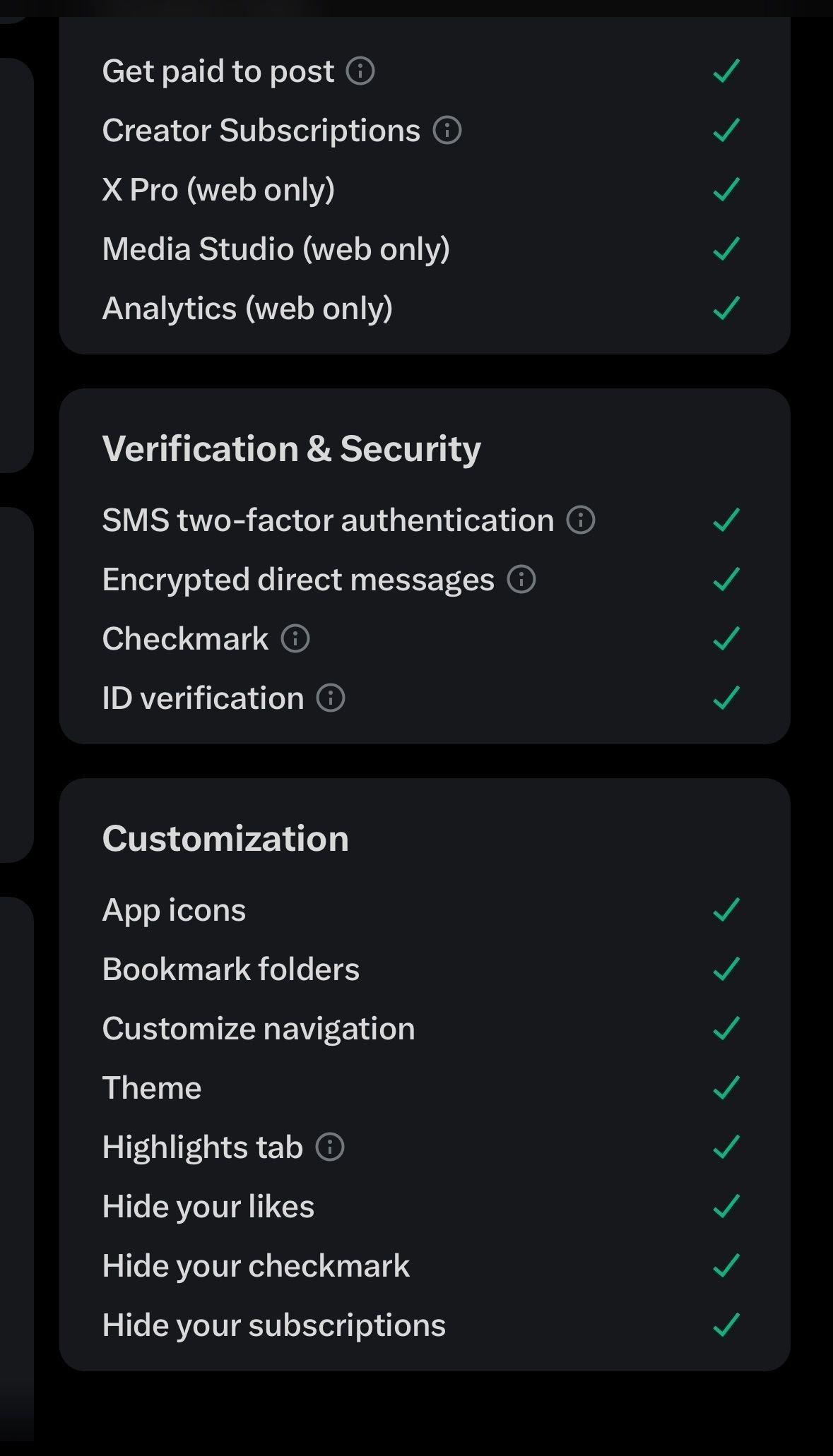
Building and Selling Premium Features or Plugins
Creating and selling premium features or plugins for open source software can be a lucrative venture. By offering enhanced capabilities or unique functionalities, you can attract users who are willing to pay for added value. Here’s how you can effectively build and market these premium offerings:
Identify Market Needs: Start by researching what users are looking for. Engage with your community through forums, social media, or surveys to find out which features they feel are missing. This insight will guide you in developing plugins that genuinely meet their needs.
Focus on Quality: Ensure that your premium features or plugins are of the highest standard. Quality is crucial when users are considering a purchase. Invest time in thorough testing and user feedback to refine your product. Remember, a well-built product often leads to repeat customers.
Offer a Free Version: Consider providing a free version of your plugin with limited features. This gives users a chance to test your product before committing to a purchase. It also helps you build a user base and generate interest in your premium offerings.
Set Competitive Pricing: Research the market to determine a competitive price for your premium features. Here are a few strategies to consider:
| Pricing Strategy | Description |
|---|---|
| Freemium Model | Basic features are free, premium features require payment. |
| One-Time Purchase | Users pay once for lifetime access to the premium features. |
| Subscription Model | Ongoing access to features for a monthly or yearly fee. |
Create a Compelling Sales Page: Your sales page should highlight the benefits and features of your premium offerings. Use engaging visuals, testimonials, and clear calls to action to persuade users to make a purchase. A well-structured sales page can significantly increase conversions.
Provide Excellent Support: Offering top-notch customer support can set you apart from competitors. Ensure that users have access to resources, such as documentation and FAQs, and be prompt in addressing any inquiries. Positive customer experiences often lead to referrals and repeat sales.
Leverage Marketing Channels: Promote your premium features through various marketing channels. Social media, email newsletters, and partnerships with influencers can help reach a wider audience. Consider running promotions or discounts to encourage initial purchases.
By following these strategies, you can effectively build and sell premium features or plugins, turning your open source software project into a profitable venture. Remember, the key lies in understanding your audience and consistently delivering value.

Offering Consulting Services to Other Developers
As a developer, your expertise is invaluable. Offering consulting services can be a lucrative way to monetize your open source contributions while helping others navigate the complex landscape of software development. By positioning yourself as an authority in your niche, you can attract clients seeking guidance on specific challenges or projects.
Start by identifying your strengths and the areas where you can provide the most value. Consider the following:
- Specialization: Focus on a specific technology stack, programming language, or framework.
- Project Management: Help teams streamline their development processes and adopt best practices.
- Code Review: Offer services to review and improve existing codebases, ensuring quality and maintainability.
- Training and Workshops: Conduct sessions that empower teams with the skills they need to excel.
To effectively market your consulting services, build a professional website showcasing your expertise. Include case studies, testimonials, and a blog where you share insights related to open source software. These elements not only validate your skills but also improve your visibility in search engines.
Networking is key. Engage with potential clients through platforms like GitHub, LinkedIn, and relevant online communities. Share your knowledge freely; this will establish your credibility and make it easier for clients to reach out for paid services. Consider offering free initial consultations to attract interest and demonstrate your value.
When setting your rates, consider the following factors:
| Factor | Considerations |
|---|---|
| Experience Level | Reflects your years in the field and expertise. |
| Project Complexity | More complex projects warrant higher fees. |
| Market Demand | Research local rates and industry standards. |
Lastly, don’t underestimate the power of follow-ups. After completing a project, check in with clients to see if they need further assistance. This not only shows you care but can also lead to additional work or referrals. Make sure to ask for feedback and testimonials, as positive reviews can significantly boost your consulting business.
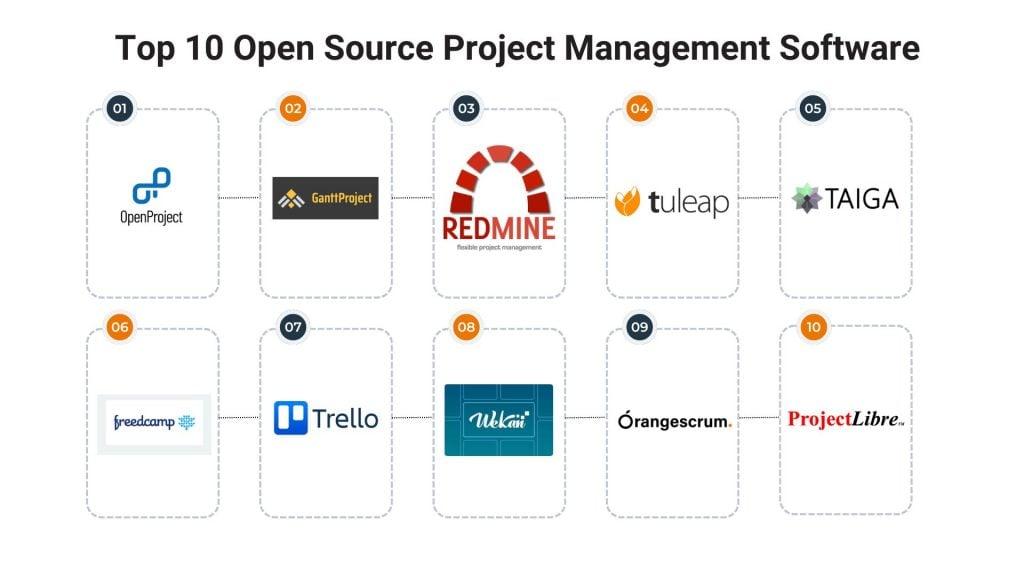
Providing Training and Support for Open Source Tools
One of the most effective ways to capitalize on the open source movement is by providing training and support for various open source tools. Companies and individuals often seek guidance on how to leverage these tools effectively. By offering targeted training programs, you can fill this need while generating revenue.
Consider creating a curriculum that covers essential aspects of popular open source software. This could include:
- Introductory courses for beginners who are new to open source tools.
- Advanced training for users looking to deepen their knowledge.
- Specialized workshops focusing on specific use cases or industries.
Webinars are another fantastic avenue to explore. You can host live sessions where participants can ask questions and receive real-time feedback. This interactive format not only enhances learning but also creates a community around the tools you’re teaching. Charge a fee for attendance, or offer a subscription model for ongoing access to a series of webinars.
To bolster your training efforts, consider developing comprehensive support packages. Many organizations that adopt open source solutions often require ongoing assistance. By offering tiered support options, you can cater to various needs:
| Support Level | Features | Price |
|---|---|---|
| Basic | Email support and FAQs | $99/month |
| Standard | Email + Live Chat support | $199/month |
| Premium | 24/7 support + Dedicated account manager | $499/month |
Offering documentation and resources is another effective way to support users and generate income. Create detailed guides, video tutorials, and troubleshooting documentation for the tools you specialize in. You can monetize these resources by packaging them into premium content or charging for access to an exclusive members-only area on your website.
Moreover, consider establishing partnerships with organizations that use or distribute the open source tools you focus on. Collaborate with them to provide workshops or training sessions tailored to their staff. This not only strengthens your credibility but can also lead to lucrative contracts.
remember that word-of-mouth is a powerful marketing tool in the open source community. Encourage participants from your training sessions to share their experiences and testimonials. This social proof can be invaluable in attracting new clients who are on the fence about investing in training and support.
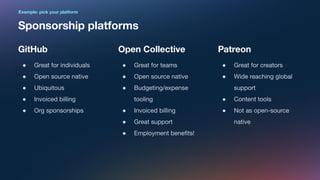
Monetizing Your Open Source Projects through Sponsorships
One of the most effective ways to monetize your open source projects is through sponsorships. This approach not only brings in financial support but also helps foster a community around your work. By creating a sustainable sponsorship model, you can secure funding while maintaining the integrity and openness of your project.
To get started, consider the following strategies:
- Define Your Value Proposition: Clearly articulate why potential sponsors should support your project. Highlight its impact, community engagement, and the benefits they will gain from being associated with your software.
- Choose the Right Platforms: Utilize platforms like GitHub Sponsors, Open Collective, or Patreon to manage sponsorships easily. These platforms allow sponsors to contribute directly and provide transparency about where the money goes.
- Create Sponsorship Tiers: Offer different levels of sponsorship that provide varying benefits. For example, a basic tier could include acknowledgment on your project’s website, while higher tiers might offer custom features or direct involvement in the project.
- Engage with Your Community: Build a strong relationship with your users and developers. Regularly share updates, gather feedback, and involve them in discussions about potential sponsorship opportunities and incentives.
- Showcase Success Stories: Share testimonials and case studies from current sponsors. This not only demonstrates the effectiveness of their support but also encourages others to get involved.
Consider creating a sponsorship proposal that outlines key information for potential sponsors. Here’s a simple table to illustrate what a sponsorship proposal might include:
| Sponsorship Tier | Monthly Contribution | Benefits |
|---|---|---|
| Bronze | $10 | Project Newsletter, Recognition on Website |
| Silver | $50 | All Bronze Benefits, Access to Exclusive Content |
| Gold | $100 | All Silver Benefits, Feature in Monthly Updates |
Don’t underestimate the power of visibility. Use social media, blogs, and newsletters to promote your sponsorship program. Regularly remind your community of the value they receive and how their support helps sustain the project. Transparency about how funds are being used can also build trust and encourage ongoing contributions.
Lastly, consider partnering with companies whose interests align with your project. This can open doors for larger sponsorships and collaborative opportunities. When you find a company that benefits from your software, reach out and propose a partnership that could be mutually beneficial.
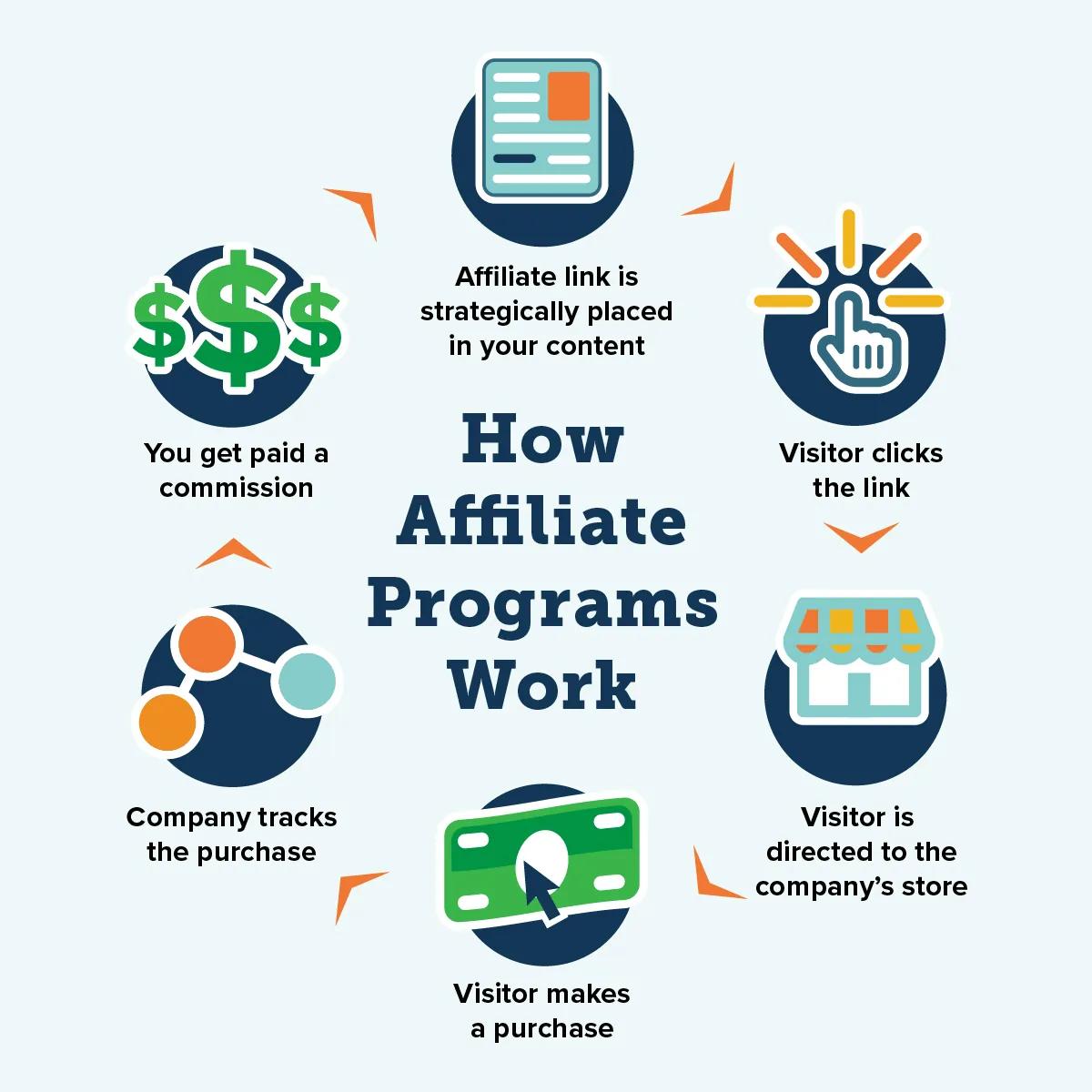
Exploring Affiliate Marketing Opportunities in Open Source
Affiliate marketing is a powerful strategy that can thrive within the open source ecosystem. As an open source software creator or promoter, you can leverage your projects to generate income while supporting the community. By thoughtfully integrating affiliate marketing into your offerings, you can align your monetization efforts with the principles of openness and collaboration.
One effective way to start is by partnering with reputable hosting providers. Many open source projects require hosting solutions, and affiliate programs from these providers often offer lucrative commissions for referrals. By recommending a hosting service that you trust, you can earn while guiding your users towards reliable resources.
Consider creating a resource page on your project’s website. This page can feature tools, software, and services that complement your open source project. By including affiliate links to these resources, you can not only provide value to your users but also generate income through each successful referral. Make sure to disclose your affiliate relationships to maintain transparency.
Another approach is to produce educational content around your project. Write tutorials, how-to guides, or video series that teach users how to get the most out of your software. Integrate affiliate links to products or services mentioned in these tutorials. For example, if you discuss a specific plugin or add-on, linking to where users can purchase it can create a passive income stream for you.
Don’t overlook the power of social media. Share your open source project on platforms like Twitter, LinkedIn, or Facebook, and include affiliate links within your posts. Engaging with your audience by responding to their questions or comments can foster a sense of community while promoting the tools and services that can enhance their experience with your software.
To further amplify your reach, consider creating a newsletter that delivers ongoing value to your subscribers. Share insights, updates about your open source project, and curated content that includes affiliate links. Not only does this keep your audience engaged, but it also provides a consistent platform for generating revenue through those links.
| Strategy | Potential Earnings |
|---|---|
| Hosting Partner Programs | $50 - $200 per referral |
| Affiliate Product Links | Varies; typically 5-30% commission |
| Online Courses and Tutorials | $20 - $500 per sale |
| Newsletter Promotions | Varies; potential for recurring income |
don’t shy away from collaborations with other open source projects or influencers in the tech community. Joint ventures can enhance your visibility and broaden your audience, making it easier to share affiliate links. This strategy not only increases your income potential but also strengthens community ties.
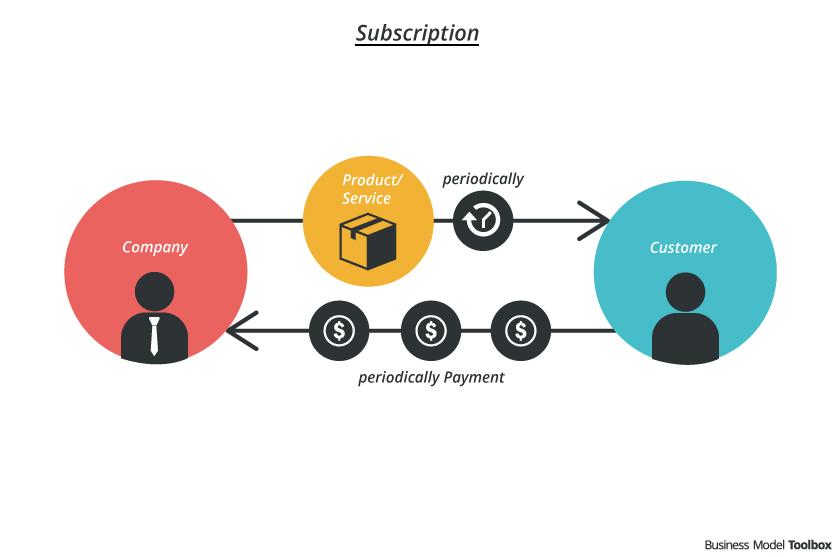
Developing a Subscription Model for Ongoing Revenue
Transitioning from a one-time sale model to a subscription model can significantly bolster your ongoing revenue. Not only does this approach provide consistent cash flow, but it also fosters a stronger relationship with your users, encouraging them to remain engaged and updated. Here’s how you can effectively develop a subscription model for your open source software.
First and foremost, define your value proposition. What features or services will users get by subscribing? It could be priority support, access to exclusive features, or premium content. Make sure that your offering is compelling enough that users see the subscription as an investment rather than a cost.
Next, consider your pricing strategy. A tiered pricing model can cater to different user needs and budgets. For instance, you could have a basic plan that provides essential features and a premium plan that offers advanced tools. This not only attracts a wider audience but also encourages users to upgrade over time. Here’s a simple example:
| Plan | Price | Features |
|---|---|---|
| Basic | $10/month | Access to core features, community support |
| Pro | $25/month | All basic features, email support, premium content |
| Enterprise | $50/month | All pro features, priority support, custom integrations |
Moreover, create a compelling onboarding experience for subscribers. This is the first interaction they’ll have with your premium offering, so ensure it is smooth and informative. Provide tutorials, guides, and community access to help them get the most out of their subscription right from the start.
Another crucial aspect is to invest in marketing your subscription model. Use targeted email campaigns, social media, and content marketing to highlight the benefits of your subscription plans. Don’t just sell the features; sell the experience and the ongoing support subscribers will receive.
listen to your subscribers. Regularly collect feedback to improve your offerings. This can lead to increased satisfaction and retention, which are key to a successful subscription model. Implementing user-requested features not only enhances your product but also shows your users that you value their input.

Creating a Strong Community Around Your Software
Building a vibrant community around your open source software isn’t just a nice-to-have; it’s a critical factor in its success and revenue potential. A strong community fosters collaboration, encourages engagement, and ultimately drives users and contributors to your project. Here are some effective strategies to create that community:
- Engage on Multiple Platforms: Don’t limit your interactions to just GitHub. Utilize forums, social media, Slack, or Discord to reach a wider audience. Each platform has unique users who may prefer different forms of communication.
- Host Events: Organize webinars, meetups, or hackathons to bring people together. These events can help users learn more about your software and encourage them to contribute their ideas and code.
- Promote Contribution: Make it easy for newcomers to get involved. Create clear contribution guidelines and tutorials that outline how to get started. A welcoming environment leads to a more active contributor base.
- Recognize Contributions: Acknowledge the efforts of your community members. Whether it’s through shout-outs in social media posts, a contributors page on your website, or small rewards, recognition goes a long way in retaining enthusiasm and participation.
One effective way to encourage community growth is to create a feedback loop. Regularly solicit input from users about their experiences and suggestions for improvements. This not only makes users feel valued but also helps you refine your software based on real-world needs. Consider using surveys or polls to gather this information efficiently.
Another key aspect is fostering a culture of inclusivity and diversity. Encourage contributions from people of all backgrounds, and actively seek out underrepresented voices in tech. A diverse community can lead to more innovative solutions and a richer software experience for all users.
| Community Engagement Strategies | Benefits |
|---|---|
| Multiple Communication Platforms | Broader reach and engagement |
| Hosting Events | Increased collaboration and visibility |
| Encouraging Contributions | More active and diverse contributor base |
| Feedback Loop | Continuous improvement based on user insights |
| Diversity Initiatives | Innovative solutions and enhanced user experience |
Lastly, consider implementing a community-led governance model. Allowing community members to have a say in decision-making processes empowers them and creates a sense of ownership and loyalty to the project. This not only enhances community buy-in but also can lead to more sustainable growth and innovation.
By focusing on these strategies, you can cultivate a strong, engaged community around your software that not only supports its growth but can also contribute to monetization through various means such as donations, sponsorships, or premium features. The more you invest in your community, the more likely it is to invest back into your project.

Showcasing Your Expertise through Speaking Engagements
Leveraging speaking engagements is a powerful way to showcase your expertise in the open source software community. Not only do these opportunities allow you to share your knowledge, but they can also generate revenue streams and enhance your professional reputation.
First and foremost, consider participating in conferences and meetups. These events often seek speakers who can provide insights into open source projects, best practices, and innovative solutions. When you position yourself as an authority in your niche, you open doors to various opportunities – from panel discussions to keynotes.
Here’s a simple checklist to help you prepare for your speaking engagements:
- Identify Your Niche: Focus on what you do best in the open source realm.
- Create Compelling Content: Develop presentations that address real problems and provide actionable solutions.
- Engage Your Audience: Use storytelling and examples to keep your audience connected.
- Network Strategically: Build relationships with other speakers and attendees.
Additionally, you can explore opportunities through webinars and online workshops. These platforms have grown in popularity and allow you to reach a global audience without the overhead costs associated with travel. By sharing your skills through virtual formats, you can not only charge for attendance but also record sessions for future revenue through on-demand sales.
Don’t underestimate the power of content creation as a speaker. Capturing your talks on video and publishing them on platforms like YouTube or your own blog can attract more followers and potential clients. With every view, your credibility increases, and you might find yourself receiving offers for paid speaking gigs.
Here’s a quick look at the potential revenue streams from speaking:
| Type of Engagement | Potential Revenue |
|---|---|
| Conferences | $500 – $5,000 |
| Workshops | $100 – $1,000 per participant |
| Webinars | $20 – $200 per attendee |
| Online Courses | $50 – $500 per course |
don’t forget to promote your speaking engagements through social media and professional networks. Regular updates about your upcoming talks can garner interest and establish you as a go-to expert in the open source community. Engage with your audience by asking for topic suggestions or feedback to create content that resonates.

Engaging in Partnerships to Expand Your Reach
Collaborating with others can significantly amplify your project’s visibility and usability. By engaging in partnerships, you not only extend your reach but also create a network of collaborators that can offer unique insights and resources. Here are some strategies to consider:
- Find Complementary Projects: Look for open-source projects that align well with your software. By integrating your solutions or providing enhancements, you can attract the attention of their user base.
- Collaborate with Influencers: Identify key figures in the open-source community who can advocate for your project. Their endorsement can drive a surge of interest and credibility.
- Join Open Source Conferences: Attending or even speaking at conferences allows you to network with potential partners. Showcase your project and its benefits to attract collaboration opportunities.
- Engage with User Communities: Becoming an active participant in forums and social media groups can help you connect with other developers and users. Sharing knowledge and resources will foster goodwill and open doors for partnerships.
When considering partnerships, think about co-marketing strategies that could benefit both parties. By pooling resources, you can reach a broader audience more effectively. Here’s a table to summarize some effective co-marketing strategies:
| Strategy | Description |
|---|---|
| Joint Webinars | Host webinars together to demonstrate combined capabilities and reach both audiences. |
| Shared Content | Co-author blogs or articles that highlight benefits and use cases of both projects. |
| Cross-Promotion | Promote each other’s projects on social media and newsletters, increasing visibility. |
| Joint Open Source Initiatives | Collaborate on new features or tools that benefit both user bases and the community. |
Building these relationships takes time and effort, but the potential rewards are immense. Not only can you reach new users, but you can also share the burden of development and maintenance. This often leads to faster innovation as ideas and resources are exchanged freely among partners.
Moreover, partnerships can also yield financial benefits. Collaborating on projects often results in shared funding opportunities, whether through grants, sponsorships, or crowdfunding. By presenting a united front, your partnership can seem more attractive to potential investors.
Lastly, never underestimate the power of community. Engaging with the vast open-source community can lead to unanticipated partnerships. When you actively contribute and support others, you build trust and a reputation that can open many doors. Remember, in the world of open-source, collaboration is key to expanding your reach and ultimately monetizing your project.
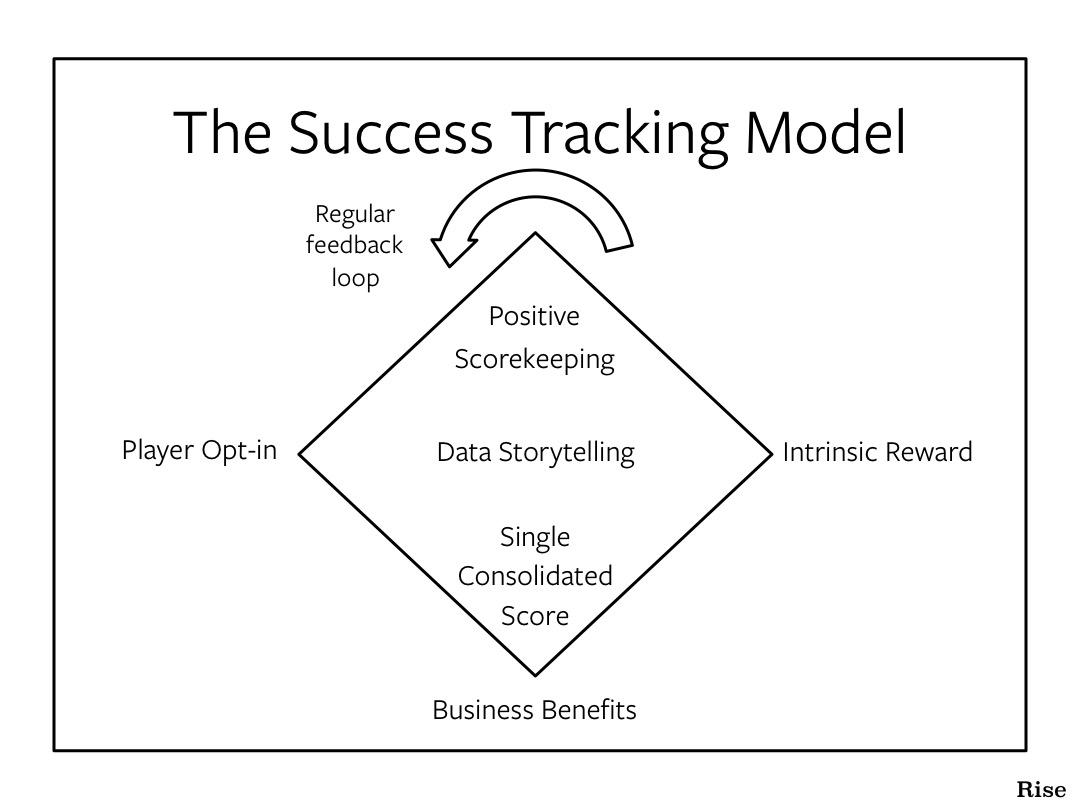
Tracking Success and Adapting Your Strategies for Growth
Building a successful open-source software venture is not a one-time effort; it requires constant monitoring and fine-tuning of your strategies. The landscape of open-source projects is dynamic, and your ability to adapt will significantly impact your growth and profitability. Here are some ways to track your progress and ensure your strategies align with your goals.
Define Your Metrics: To gauge success, start by identifying specific metrics that matter to your project. Some key performance indicators (KPIs) include:
- Number of Contributors: A growing community indicates a healthy project.
- User Engagement: Monitor how often users interact with your software, whether through downloads, forum participation, or feedback.
- Revenue Streams: Track income from various channels to see which ones are most effective.
Utilize Analytics Tools: Leverage analytics platforms to gain insights into user behavior. Tools like Google Analytics can help you understand:
- Where your traffic is coming from.
- Which features are most popular.
- User retention rates.
Community Feedback: Engaging with your community is crucial. Regularly solicit feedback through surveys, forums, or social media. This will help you understand:
- What users appreciate about your software.
- Areas that need improvement.
- New features or functionalities they desire.
Regularly Review Your Strategies: Allocate time each month to review your strategies. Ask yourself:
- Are we meeting our growth targets?
- What strategies are working, and which ones need adjustment?
- Do we need to pivot our approach based on market trends?
Adapt Based on Data: Use the insights gathered from your metrics and community feedback to adapt your strategies. This could mean:
- Focusing more on your most profitable revenue streams.
- Enhancing user experience based on feedback.
- Expanding your marketing efforts to reach a broader audience.
Document Your Changes: Keep a record of the strategies you implement and their outcomes. This documentation will serve as a valuable resource for understanding what works best for your project. Consider using a simple table like the one below to track changes:
| Strategy | Initial Outcome | Adjusted Outcome |
|---|---|---|
| Increased Social Media Engagement | 5% Growth | 15% Growth |
| Improved Documentation | Lower User Retention | Higher User Retention |
By establishing a structured approach to tracking and adapting your strategies, you not only enhance your chances of success but also foster a thriving community around your open-source software. Continuous improvement is key in this ever-evolving landscape, so remain flexible and responsive to change.
Frequently Asked Questions (FAQ)
Q&A: How to Make Money From Open Source Software (9 Simple Ways)
Q: Why should I consider making money from open source software?
A: Great question! Open source software not only allows you to showcase your skills and creativity, but it also opens up various revenue streams. The community around open source can be incredibly supportive, and contributing to this ecosystem can lead to lucrative opportunities. Plus, you get the satisfaction of building something that others can use and benefit from!
Q: What are some common ways to monetize open source projects?
A: There are several strategies you can explore! Here are a few popular ones:
- Dual Licensing: Offer your software under an open-source license and a paid commercial license. This way, businesses can choose to pay for additional features or support.
- Freemium Model: Provide a basic version of your software for free, while charging for premium features. This allows users to try before they buy!
- Sponsorships and Donations: Platforms like GitHub Sponsors or Patreon allow users to support your work financially. If people love what you do, they’ll often want to contribute!
- Consulting Services: Use your expertise to help businesses implement your software or provide custom solutions.
- Training and Workshops: Offer paid training sessions or workshops for teams who want to learn how to use your software effectively.
- Support Services: Charge for premium support options, such as troubleshooting or dedicated help desks.
- Sponsored Features: Allow companies to pay you to develop specific features that they need.
- Merchandising: Create and sell branded merchandise related to your project. Who wouldn’t want a T-shirt featuring their favorite open source tool?
- Partnerships: Collaborate with businesses that can benefit from your software and create joint ventures that generate revenue.
Q: How can I build a community around my open source project to support monetization?
A: Building a community is crucial! Start by actively engaging with users through social media, forums, or newsletters. Encourage contributions and feedback, and be responsive to user needs. Hosting webinars or meetups can also foster a sense of belonging. The stronger your community, the more likely they’ll be to support you financially!
Q: Do I need to be a coding expert to make money from open source software?
A: While coding skills are certainly valuable, you don’t have to be a guru to get started. Many successful open source projects are led by individuals who excel in other areas, like project management, community building, or marketing. Identify your strengths and leverage them!
Q: Is it really possible to earn a substantial income from open source?
A: Absolutely! While it may take time and effort to establish your project and grow your audience, many individuals and companies have successfully turned open source projects into significant sources of income. With dedication and the right strategies, you can do it too!
Q: What if my project doesn’t gain traction?
A: It’s essential to remain persistent and adaptable. Analyze what might not be working—maybe it’s the marketing, the community engagement, or even the product itself. Don’t hesitate to pivot your approach or seek feedback. Remember, many successful projects started small and grew over time!
Q: Any final tips for someone eager to dive into the open source world?
A: Start by choosing a project that you’re passionate about—your enthusiasm will shine through! Focus on building a strong community, and don’t be afraid to experiment with different monetization strategies. And most importantly, keep learning and adapting. The open source world is full of opportunities waiting for you to seize them!
Final Thoughts
Outro
And there you have it—nine practical and straightforward ways to turn your passion for open source software into a profitable venture. Whether you’re a seasoned developer or just starting out, these strategies can help you monetize your skills while contributing to a community that thrives on collaboration and innovation.
Remember, the beauty of open source is not just in the code you create, but also in the connections you make and the value you build. Each of these methods offers a unique opportunity to not only earn money but also to enhance your expertise and grow your professional network. So why wait? Dive in, explore these options, and see what fits your style and goals best.
If you’ve enjoyed this article or have other ideas to share about making money with open source, we’d love to hear from you! Your journey could inspire others to take the plunge as well. Happy coding and good luck on your money-making adventure!




